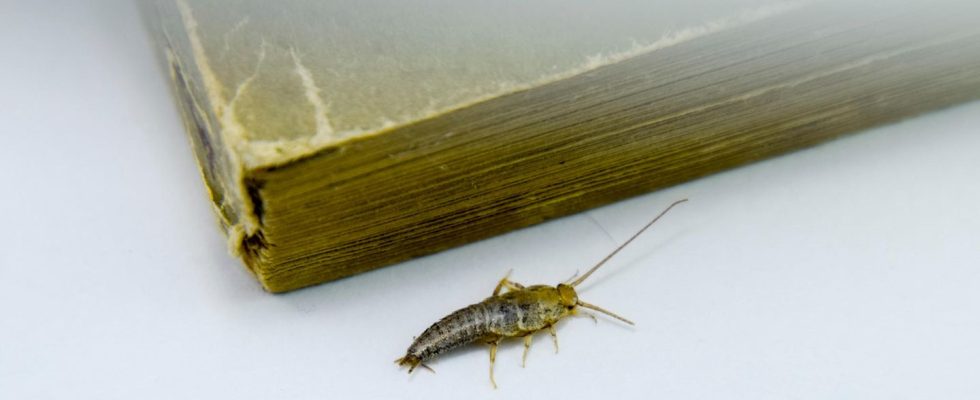Nocturnal visitors
Why do silverfish live in so many households? That is the cause
Silverfish prefer to stay in damp rooms such as the bathroom
© Leonid Eremeychuk/Getty Images
Silverfish are not a sign of poor hygiene, although they feed on dander and dust mites. The reason why the wingless insects hide in many households is completely different.
Actually their correct name is “silverfish”, but in common usage they are better known as “silverfish”. Their silvery or mother-of-pearl scales give rise to their name, but it is their eating behavior that gives them their technical term “Lepisma saccharina”: it translates as “sugar guest” – because they need sugar to survive. They not only feed on organic waste such as hair and skin flakes, but also on starchy foods such as flour, grain or pastries. So it’s hardly surprising why insects feel particularly comfortable in human households. Where exactly and why not necessarily all of them Fighting silverfish is explained below.
Where do silverfish live? Causes of an infestation
In Central Europe, silverfish live mainly in heated living spaces – preferably where it is not only nice and warm but also humid: in the bathroom, in the kitchen or in the rooms where you hang up your damp laundry. The absolute comfort temperature is between 25 and 30 degrees Celsius, but if it gets too hot (from 35° C), they die. However, if the temperatures fall below ten degrees, the insects become inactive. If it is too dry, silverfish can no longer reproduce: a female lays up to 20 eggs.
You rarely or never see silverfish during the day, as the animals are afraid of light and only become active at night. For this reason, they hide wherever it is dark: in cracks or joints or behind skirting boards or wallpaper. If you catch the insects in the act, scurrying across the floor or disappearing behind the wall, you don’t have to panic immediately – because the fact is that the animals are neither harmful to your health nor a sign of poor hygiene. On the contrary: silverfish are actually useful.
That’s why silverfish have a practical use
Some infestations, such as those of food moths, should definitely be combated, as the insects contaminate food and their droppings can trigger allergies and gastrointestinal diseases. Silverfish, on the other hand, are not harmful to our health; instead, they even have a practical benefit: apart from the fact that they eat house dust mites and are therefore good for allergy sufferers, a heavy infestation can indicate a moisture problem in the apartment – because silverfish also eat fungal spores. If the insects are present in large numbers, you should examine your four walls for possible mold infestation.
You can prevent silverfish with these tips
Even though silverfish are harmless in principle, insects still make many people feel disgusted. You can therefore take preventative measures to prevent the animals from feeling comfortable in your home and running away:
- Since silverfish prefer warm and moist rooms, you should ventilate them regularly – this especially applies to your bathroom. The colder the air and the lower the humidity, the more uncomfortable it becomes for the insects.
- Since organic waste such as hair and dead skin flakes are on the menu of silverfish, you should vacuum and mop regularly or wipe with a damp cloth in all rooms.
- Since the insects, who are afraid of light, stay in dark cracks and crevices or use them as entrances, it is best to close them as best as possible – with joint filler or silicone, for example.
- Since the wingless insects feed on fungal spores, you should inspect your home for mold infestation – and eliminate it as best you can. This not only keeps the animals away, but is also better for you.
You might also be interested in:
This article contains so-called affiliate links. Further information are available here.


